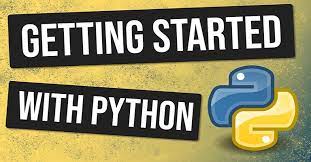Let's Learn a bit about Python
Python is one of the most popular programming languages in the computer sector since it is strong and versatile. Python is well-known for being easy to understand and straightforward, making it a great option for both novice and seasoned developers. We’ll go over what Python is, why it’s so popular, some of its main features, and how to install it on Windows, Mac, and Linux in this blog post. Additionally, we’ll guide you through writing a basic “Hello, World!” programto get you started with Python programming.
What is Python?
Python is a general-purpose, high-level, interpreted programming language that is utilised in many different fields, such as web development, data analysis, machine learning, and artificial intelligence. Python is renowned for its dynamic semantics, robust standard library, and ease of use. It also boasts a sizable developer community that never stops adding to its expansion. Making it simpler to read and comprehend for developers while also cutting down on the number of lines of code was the main goal in its creation.
Python’s History from the 1980s to 2024
Late 1980s: Guido van Rossum, inspired by ABC and Monty Python, begins creating Python at CWI in the Netherlands. Its focus: simplicity, readability, and exception handling.
1991: Python 0.9.0, the first public release, emerges. It boasts core features like modules, functions, and exception handling.
1994: Python 1.0 brings clarity and stability, attracting a small but dedicated community.
2000: Python 2.0 arrives, introducing significant upgrades like Unicode support and list comprehensions. Adoption accelerates, particularly in web development.
2008: A watershed moment! Python 3.0 launches with major improvements, but with the cost of breaking some backwards compatibility. The community divides, using both 2 and 3 for years.
2010s: Python’s popularity skyrockets. It dominates data science, machine learning, scripting, and automation. Frameworks like Django and Flask fuel web development.
2020: Python 2.7 reaches its end-of-life, pushing developers towards Python 3, now enjoying widespread adoption.
2024 (Present): Python reigns supreme! It sits atop popularity rankings, beloved by beginners and pros alike. Its versatility extends to AI, scientific computing, and even game development.
Key factors in Python’s success
Readability: Code resembling natural language makes it easy to learn and maintain.
Vibrant community: Active forums, tutorials, and libraries provide immense support.
Cross-platform compatibility: Runs seamlessly on various operating systems.
Why Python?
1. Versatility: Python is a general-purpose language, making it suitable for a wide range of applications, from web development and data analysis to artificial intelligence and machine learning.
2. Community Support: Python boasts a large and active community of developers. This means there are abundant resources, libraries, and frameworks available, making problem-solving more accessible.
3. Readability: Python’s syntax is clear and straightforward, resembling the English language. This readability reduces the cost of program maintenance and development.
4. Productivity: With its simple and concise syntax, Python allows developers to focus on solving problems rather than dealing with complex syntax, resulting in increased productivity.
5. Compatibility: Python is cross-platform, meaning code written in Python can run on Windows, Mac, and Linux systems without modification.
Features of Python
Easy to Learn: Python’s syntax is designed to be beginner-friendly, making it accessible for those new to programming.
Interpreted Language: Python is an interpreted language, which means that code can be executed line by line. This facilitates debugging and testing.
Large Standard Library: Python comes with an extensive standard library that includes modules and packages for various tasks, reducing the need for external dependencies.
Dynamic Typing: Python is dynamically typed, allowing for flexibility in variable types and reducing the amount of code a developer needs to write.
Object-Oriented: Python supports object-oriented programming, facilitating the organization and structuring of code.
Python Syntax
Syntax in a programming language is a standard way of expressing values or statements which every programming language follows.

Hello, World! Program
Now that you have Python installed, let’s write a simple “Hello, World!” program.

Save this code in a file named hello_world.py. Open a terminal, navigate to the directory containing the file, and run:

You should see the output:

Conclusion
Getting started with Python is a rewarding journey. Its simplicity, readability, and vast community support make it an excellent choice for both beginners and experienced developers. Now that you’ve installed Python and written your first program, you’re ready to explore the vast world of Python programming. Happy coding!



leave a comment